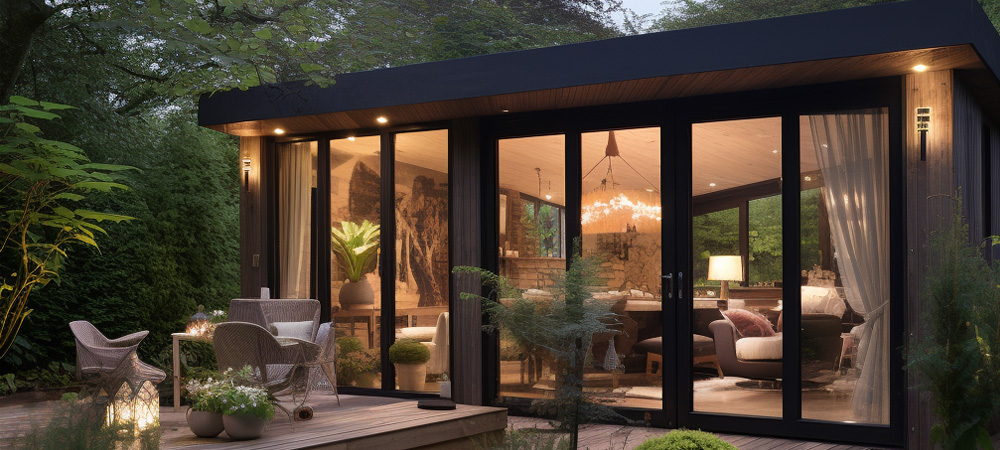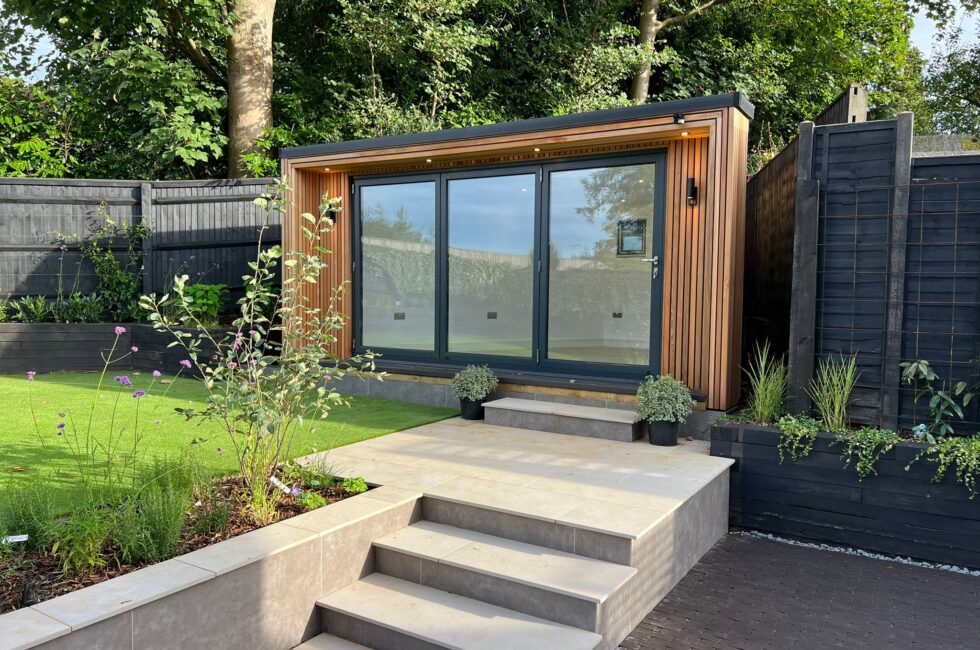Best Info On Planning Permission For Garden Summer Houses
Wiki Article
What Authorizations Do You Need For Garden Rooms And Other Types Of Uses? Of Use?
If you are building garden rooms, conservatories outhouses or garden offices and extensions in the garden, the "change of usage" concept is crucial in determining whether a planning permit is required. Planning permission is required for changes in the use.
Planning permission is usually required when you want to transform an existing non-residential property (such as a garage, agricultural structure or garden office) to a home or garden office. This is due to a modification to the purpose of the building will be needed.
Garden Rooms for Living Accommodation
It is considered a "change of use" when you transform a garden to an independent dwelling, such as an apartment for guests. It is essential to obtain planning permission in order to ensure that a structure meets the residential standards.
Business Use
If you intend to utilize the garden space or conservatory for business reasons (e.g. use it as an office for a home-based business that involves frequent guests or employees) the planning permission might be required. The effect of the project on the surrounding environment like traffic, noise and parking, might require planning permission.
For Community or Educational Use
Changing the use of a garden building into a community or educational space (such as the use of a meeting room or classroom) also requires permission for planning. The local council will be able to determine the suitability and the impact of the proposed site.
Impact on Local Infrastructure:
Any modification to the use of which has a significant impact on infrastructure in the local area (e.g., drainage, roads, and public services) generally requires planning permission. These impacts will be evaluated by the local planning authority as part of the application process.
Dual Use
For properties that are mixed-use (e.g., residential and commercial) the permit for planning is typically required to clearly define the different uses.
Traffic and footfall are increasing:
Planning permission could be required depending on whether the new use will likely increase the amount of foot traffic (e.g. the conversion of an unimportant garden space into retail space). This is in order to limit any possible impact on the locality.
Building Regulations In compliance:
Although it's not a strictly planned issue but any change in the usage must be in line with construction codes to ensure the highest the highest standards of safety, energy efficiency, and health. This is especially true the case of conversions of non-habitable space into habitable spaces.
Environmental Impact:
Changes of use that could negatively impact the environment, like converting agricultural land into residential uses, require planning approval. A planning application may include an environmental analysis.
Community and Amenity:
A crucial aspect to consider is how the changes will impact the amenities of the community and the character of the neighborhood. To take an example, to transform a room in the garden into a coffee shop, you need planning permission. This is so that it is in line with the community's plans and preserves the amenities of the area.
Designated Areas:
In areas designated as conservation areas, National Parks (AONB) or Areas of Outstanding Natural Beauty Changes in usage are subject to more stringent controls to ensure the integrity of the place. Planning permission is vital in these cases.
Local Planning Policies:
Local planning authorities can have policies that differ widely on the subject of changes to usage. You should consult these policies so you know which types of changes are allowed and what requirements need to be fulfilled.
For a summary the planning approval process is typically needed for any significant change of the use of conservatories in the garden, outhouses, garden offices or extension. This will ensure that the new usage is compatible with the site, is compatible with local, national and environmental planning guidelines and is able to take into consideration potential impacts. A prompt discussion with the local planning authority is vital to identify the specific requirements for the project and obtain approvals. See the recommended better ground for site examples including garden rooms near me, herts garden rooms, best heater for log cabin, herts garden rooms, outhouse buildings, garden room permitted development, do i need planning permission for a garden room with toilet, myouthouse, garden rooms in St Albans, best heater for log cabin and more.

What Height Restrictions Must You Follow When Designing Gardens?
Planning permission might be needed to construct garden rooms, extensions and outhouses as well as conservatories. Height restrictions are a major aspect in determining if or not planning permission will be required. The following are some of the key elements to take into consideration when planning height:
The maximum height permitted for an unattached outbuilding (or extension) equipped with a double-pitched roof (such as the gable roof) is 4 metres.
If you have a different type of roof (flat, single-pitched, etc. For all other types (flat or single pitched etc. ) The ceiling height cannot exceed three meters.
Proximity of boundaries:
The maximum height of a structure within 2 metres of the property line isn't over 2.5 meters. This also applies to similar outbuildings, such as garden rooms, sheds or similar structures.
Eaves Height
The maximum length of eaves (the distance between the roof's lowest point up to the highest eaves height) of any structure cannot exceed 2.5 meters.
Conservatories & Extensions
For a single-story rear extension the maximum height should not be more than 4 meters. This includes the roof, as well as any parapet walls.
Side Extensions
Extensions that extend to the side of the home must not be taller than 4 meters, and should not be wider than half of the original width.
Special Roofs
The roofs of structures with a flat surface are generally limited to a maximum three meters in height.
Additional Restrictions on Designated Areas
In conservation zones, areas of Outstanding Natural Beauty(AONB) and other areas that are designated, stricter restrictions on height may apply and planning approval may be required for construction that would otherwise fall within the permitted development rights.
Buildings at National Parks
National Parks structures may also be subject to height restrictions that require planning permission.
Roof Design
It is crucial to take into account the height of the top portion (excluding chimneys and antennas). Consider the size of the roof. Planning permission is required if the height of the building is greater than the allowed development limits.
Neighbours impacted:
Even if a building is within the permitted height limit the planning permit may be required if it substantially affects privacy, light or view of neighbouring properties.
Maximum Height Overall:
The maximum height of any structure is four meters. A garden office built with roofs with two pitches, like, cannot be higher than 4 meters.
Decking, Platforms or Platforms
The decking, platforms or other structures that are attached to the building must not raise the ground higher than 3 meters. This is to avoid the need for the issuance of a permit for development.
Always visit the official website of your local authority for any new regulations or any changes. Even if a project is covered by general permitted development rights, specific conditions or local variations may require approval from the planning authority. View the top garden room gym hertfordshire for more advice including garden outhouse, garden room permitted development, garden room heater, garden office electrics, herts garden rooms, outhouse for garden, outhouse building, outhouse garden rooms, outhouse builders, what size garden room without planning permission uk and more.

What Planning Permits Are Required For Gardens, Rooms, Etc. In Terms Of Location Restrictions?
When planning to build conservatories, garden rooms or outhouses, garden offices, or extensions, the location of your property plays a significant factor in determining whether permits for planning are required. Be aware of these essential factors when deciding the location of your building: Distance from boundary
Any building within 2 meters of the property's boundaries must not exceed a maximum height of 2.5 meters. If the building's height is higher than the limit, planning permission is required.
Front of the property
Extensions or buildings which are built in the direction of the principal elevation of a house (the face-facing side) generally require approval for planning. This is due to the fact that permitted development rights generally don't permit them.
Part of the Property:
Side extensions must be in line with certain height and size restrictions and are often required to obtain permission to plan if they go beyond the existing side wall of the home.
Rear of the property
The size and height of garden extensions and rear rooms located at the rear of the house is limited. If the development exceeds the permitted boundaries, planning approval is required.
Designated Areas
Stricter controls apply in conservation areas, Areas of Outstanding Natural Beauty, National Parks and World Heritage Sites. Any new construction, regardless of size, could require planning permission.
Listed Buildings
List building properties have stricter rules. Planning permission and listed-building consent are required in order to construct an entirely new structure or alter the existing structure, irrespective of the area it is located on the property.
Green Belt Land:
In order to preserve open spaces, it's very difficult to build on greenbelts. It is common to require special permissions for any new construction or major alteration.
Areas prone to flooding:
If the property is in a flood-prone area further regulations are required to ensure that the construction isn't a source of increased flooding risk. Planning permission, and perhaps a flooding risk assessment could be required.
Urban vs. Rural Settings:
Urban settings often have different regulations than rural ones. Rural properties can enjoy a more relaxed approach to restrictions, such as the size or location of outbuildings.
Highways and Public Rights of Way:
If the structure is close to roads, highways or public rights of way, a planning permit may be required to ensure it does not obstruct views or access or cause harm to others.
Shared ownership or leasehold land:
If you have a home that is leasehold or part a shared ownership scheme it could be necessary to seek additional permission from the property owner or managing entity. It is also possible to require permission for planning based on the local laws.
The Structures Adjacent:
If the structure being built is planned to be constructed adjacent to existing structures or buildings especially those located on adjacent property, planning permission might be required to ensure there is no negative impact on adjacent structures or land.
For advice regarding your particular property's conditions and the location, it's recommended to speak to your local planning authority. The rules vary based on local policies. The compliance with all applicable restrictions can assist you in avoiding legal problems and possible penalties. Follow the top rated armoured cable for shed for more recommendations including outhouse garden rooms, outhouse building, garden office electrics, Tring garden rooms, garden room planning permission, garden room planning permission, how to lay decking on soil, armoured cable for garden room, what is a garden room, how to get power to a garden room and more.
